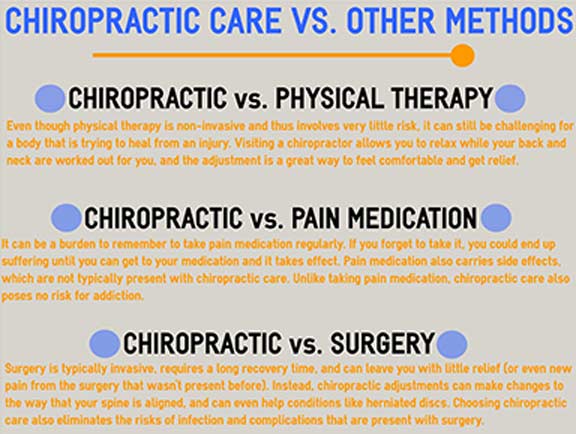The Link Between Pose And Pain In The Back: Ways To Ensure Appropriate Positioning All Day Long
The Link Between Pose And Pain In The Back: Ways To Ensure Appropriate Positioning All Day Long
Blog Article
Personnel Writer-Ibrahim McIntyre
Preserving correct pose isn't nearly sitting up directly; it's about aligning your body in a manner that supports your spine and reduces the threat of pain in the back. https://chiropracticfamilyclinic74951.blogacep.com/37310262/you-could-be-stunned-to-learn-that-many-false-impressions-concerning-chiropractic-treatment-stem-from-a-lack-of-understanding-uncover-the-fact-behind-these-misconceptions rest, stand, and move throughout the day can considerably impact your spine health. But exactly how exactly can you make certain good placement constantly, even throughout busy days filled with different tasks? Let's dig deeper into the subtle yet impactful modifications you can make to your day-to-day regimen to maintain your back happy and healthy and balanced.
Importance of Appropriate Pose
Appropriate stance is crucial in keeping a healthy back and preventing pain. When you sit or stand with excellent stance, your spine remains in alignment, lowering stress on your muscular tissues, ligaments, and joints. This alignment allows the body to distribute weight equally, avoiding excessive stress on specific locations that can bring about discomfort and discomfort. By maintaining your back properly lined up, you can additionally enhance your breathing and digestion, as slouching can compress organs and restrict their capability.
Furthermore, keeping good posture can enhance your total appearance and self-esteem. When very low back pain stand tall with your shoulders back and head held high, you show self-confidence and appear more friendly. Excellent pose can also make you feel more energized and sharp, as it advertises correct blood circulation and enables your muscles to function successfully.
Integrating proper posture right into your everyday regimen, whether resting at a workdesk, strolling, or exercising, is essential for preventing back pain and advertising total well-being. Keep in mind, a small modification in just how you hold on your own can make a considerable difference in just how you feel and function throughout the day.
Common Postural Mistakes
When it pertains to maintaining good position, lots of people unconsciously make typical mistakes that can contribute to back pain and discomfort. One of one of the most widespread errors is slouching or stooping over while sitting or standing. This setting places excessive stress on the spine and can lead to muscle mass discrepancies and discomfort in the future.
Another usual mistake is overarching the reduced back, which can squash the natural contour of the back and trigger pain. Additionally, going across legs while sitting may really feel comfortable, but it can produce an inequality in the hips and pelvis, causing postural concerns.
Utilizing a cushion that's also soft or also solid while sleeping can also impact your positioning and add to pain in the back. Lastly, regularly craning your neck to look at displays or readjusting your setting regularly can stress the neck and shoulders. Bearing in mind these common postural mistakes can aid you keep far better alignment and minimize the danger of neck and back pain.
Tips for Correcting Positioning
To enhance your alignment and reduce neck and back pain, it's essential to concentrate on making small changes throughout your everyday regimen. Begin by bearing in mind your pose. When sitting, guarantee your feet are level on the floor, your back is straight, and your shoulders are relaxed. Prevent slouching or leaning to one side. Usage ergonomic chairs or paddings to support your lower back.
When standing, disperse your weight equally on both feet, keep your knees a little bent, and tuck in your hips. Involve your core muscle mass to support your spine. Take breaks to stretch and walk if you have a less active task. Include workouts that strengthen your core and back muscular tissues, such as slabs or bridges.
While sleeping, use a pillow that sustains the natural curve of your neck to maintain appropriate spinal placement. Avoid sleeping on your stomach, as it can strain your neck and back. By bearing in mind these tips and making small changes, you can gradually correct your placement and alleviate back pain.
Conclusion
Keep in mind, maintaining great position is crucial to stop pain in the back and promoting spinal health. By being mindful of your positioning, distributing weight equally, and engaging your core muscular tissues, you can decrease strain on your back and minimize the risk of discomfort and injury. Include ergonomic assistance, take regular breaks to extend, and strengthen your core and back muscle mass to maintain appropriate positioning throughout the day. Your back will certainly thank you for it!
